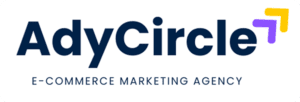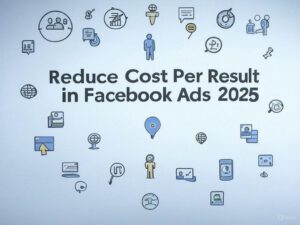Table of Contents
- Introduction
- Understanding the D2C E-commerce Marketing Funnel
- Stages of a High-Converting E-commerce Marketing Funnel
- Step-by-Step Guide to Building Your D2C E-commerce Sales Funnel
- How to Use Email Marketing in the D2C E-commerce Funnel
- Best Tools for Tracking D2C E-commerce Funnel Performance
- Optimizing Your Funnel for Maximum Conversions
- Conclusion & Next Steps
- FAQs
Imagine walking into a store where every step—from browsing products to checkout—is seamlessly designed to guide you toward making a purchase. That’s exactly what a D2C E-commerce Marketing Funnel does in the digital world. It’s your brand’s secret weapon to attracting potential customers, converting them into buyers, and turning them into loyal brand advocates.
With the rise of direct-to-consumer (D2C) brands, having a well-structured marketing funnel is no longer optional—it’s a necessity. But how do you create a funnel that doesn’t just exist but actually works? Let’s dive in.
Understanding the D2C E-commerce Marketing Funnel
A marketing funnel is essentially a roadmap that guides customers from discovering your brand to making repeat purchases. The funnel narrows down as potential buyers move through different stages, eliminating those who lose interest while nurturing those who are genuinely interested.
But here’s the catch: not all e-commerce funnels are created equal. The best ones are optimized at every touchpoint to maximize conversions and customer satisfaction.
Stages of a High-Converting E-commerce Marketing Funnel
1. Awareness Stage
At the top of the funnel, your goal is to grab attention. People may not know your brand yet, so your job is to introduce yourself effectively.
How to attract customers:
- Run targeted paid ads (Google Ads, Facebook, Instagram)
- Optimize for SEO to rank for relevant keywords
- Leverage influencer marketing to gain credibility
- Create valuable blog content (like this one!)
2. Consideration Stage
Now that you’ve caught their eye, it’s time to build trust and interest.
Best practices for engagement:
- Use email marketing to nurture leads
- Offer free trials, samples, or discounts
- Showcase social proof (reviews, testimonials, UGC)
- Provide engaging product demos or webinars
3. Conversion Stage
This is the moment of truth—will they buy or bounce?
Ways to optimize for conversion:
- Create a high-converting landing page with clear CTAs
- Offer limited-time deals to create urgency
- Simplify the checkout process (one-click checkout, multiple payment options)
- Provide excellent customer support
4. Retention & Advocacy Stage
The journey doesn’t end after a purchase. The real magic happens when you turn customers into repeat buyers and brand ambassadors.
Retention strategies:
- Personalized email campaigns with product recommendations
- Loyalty programs to reward repeat purchases
- Referral incentives to encourage word-of-mouth marketing
- Exceptional customer service to enhance experience
Step-by-Step Guide to Building Your D2C E-commerce Sales Funnel
- Define Your Target Audience – Know who you’re selling to and what problems they need solving.
- Create High-Quality Content – Blog posts, videos, and social media that attract and educate.
- Use Lead Magnets – Offer free resources (ebooks, discount codes) in exchange for emails.
- Build an Email Sequence – Automate nurture emails to keep leads engaged.
- Optimize Your Website & Landing Pages – Ensure they’re fast, mobile-friendly, and conversion-focused.
- Track & Analyze Performance – Use analytics tools to refine your strategy continuously.
How to Use Email Marketing in the D2C E-commerce Funnel
Email marketing is one of the most effective ways to nurture leads and boost conversions. Here’s how:
- Welcome Emails: First impressions matter—make new subscribers feel valued.
- Abandoned Cart Emails: Recover lost sales with reminders and special offers.
- Product Recommendations: Use purchase history to suggest relevant products.
- Exclusive VIP Offers: Reward loyal customers with early access and discounts.
Best Tools for Tracking D2C E-commerce Funnel Performance
- Google Analytics – Track user behavior and funnel drop-off points.
- Klaviyo – Automate personalized email marketing campaigns.
- Hotjar – Visualize how visitors interact with your site.
- Shopify Analytics – Monitor store performance and conversion rates.
- Facebook Pixel & Google Tag Manager – Optimize ad campaigns with retargeting insights.
Optimizing Your Funnel for Maximum Conversions
✅ Improve Page Load Speed – A slow site kills conversions. ✅ Use Exit-Intent Popups – Capture leads before they leave. ✅ A/B Test Everything – Headlines, CTAs, images—test it all. ✅ Simplify Checkout – Fewer steps = higher conversions. ✅ Leverage User-Generated Content – Show real customers using your products.
Conclusion & Next Steps
Building a winning D2C e-commerce marketing funnel is all about understanding your audience, guiding them through a seamless journey, and continuously optimizing each stage. The more you refine your funnel, the better your conversion rates and customer retention will be.
💡 Ready to take action? Start by auditing your current funnel, implementing the strategies above, and watching your e-commerce brand grow. Need help optimizing your funnel? AdyCircle specializes in helping D2C brands enhance their marketing funnels for maximum growth. Let’s connect!
FAQs
A D2C e-commerce marketing funnel is a step-by-step process that guides potential customers from discovering your brand to making a purchase and becoming repeat buyers.
Optimize your landing pages, use compelling CTAs, implement retargeting ads, and simplify the checkout process to reduce drop-offs.
Google Analytics, Klaviyo, Hotjar, Shopify Analytics, and Facebook Pixel are great tools for tracking user behavior and conversion rates.
Email marketing helps nurture leads, recover abandoned carts, build customer relationships, and encourage repeat purchases through personalized campaigns.





